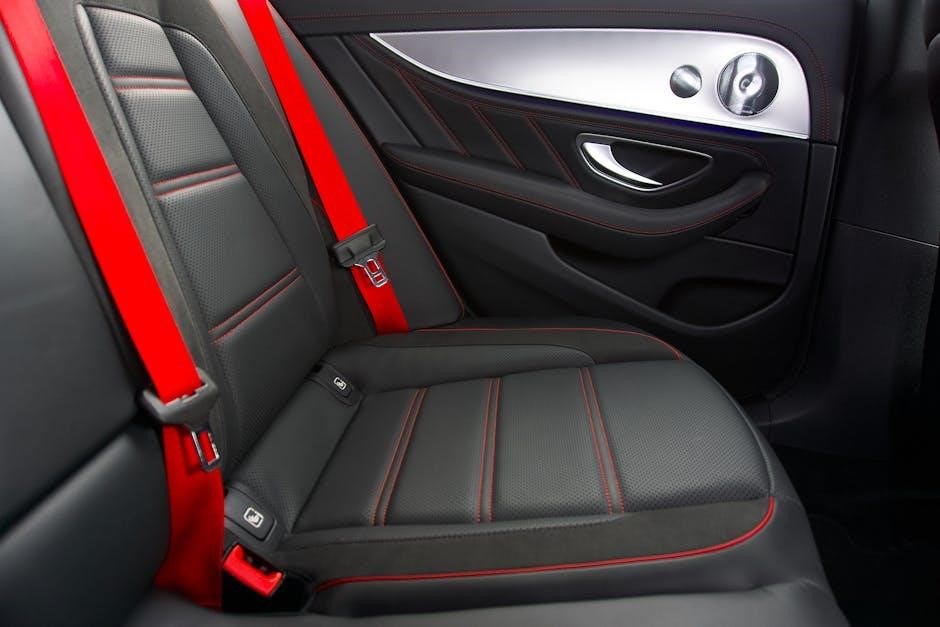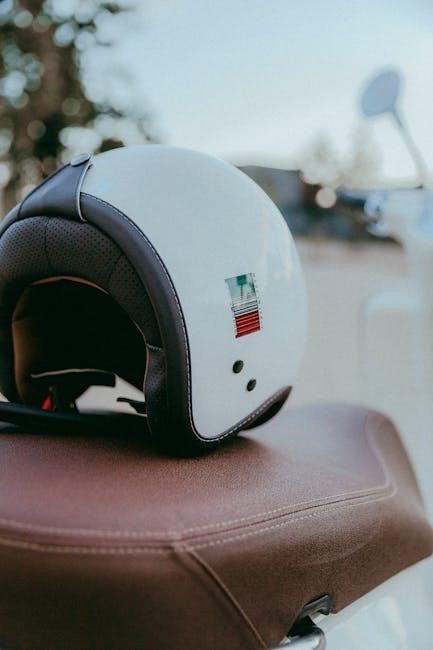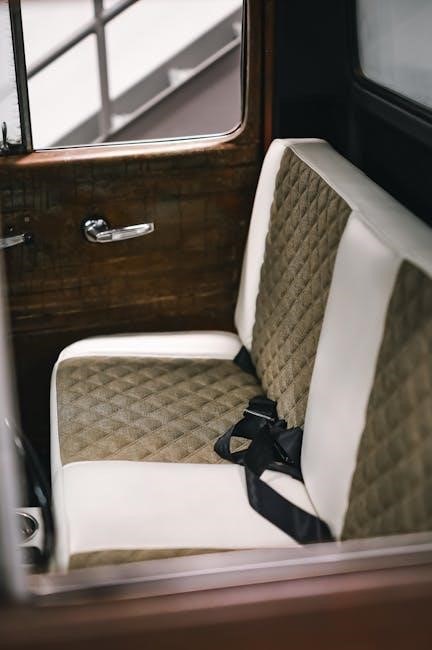safety first car seat instructions
Welcome to the Safety 1st car seat instructions guide. Proper installation ensures your child’s safety, meets regulations, and provides peace of mind for parents.
1.1 Understanding the Importance of Proper Installation
Proper installation of a Safety 1st car seat is critical to ensure your child’s safety; Incorrect installation can lead to reduced protection in the event of a crash. Always follow the manufacturer’s guidelines and your vehicle’s manual to secure the seat correctly. Failure to adhere to instructions can result in serious injury or even fatality. Take the time to understand each step, as proper installation ensures optimal safety and meets legal requirements for child restraints.
1.2 Overview of Safety 1st Car Seat Models
Safety 1st offers a range of car seat models designed for different stages of a child’s growth. The Grow and Go All-in-One Convertible Car Seat (SKU CC138) and the MultiFit EX Air 4-In-1 Car Seat (Item No. CC204) are popular options. These models accommodate rear-facing, forward-facing, and booster modes, ensuring long-term use. They feature adjustable harnesses, weight limits up to 100 pounds, and compatibility with the LATCH system for secure installation. Each model is designed to adapt to your child’s needs, providing safety, comfort, and versatility.

Preparing for Installation
Before installing, read the manual, check vehicle compatibility, and measure your child’s weight and height to ensure proper mode selection. Locate the LATCH system and vehicle belts, as detailed in your car’s manual. Proper preparation ensures a safe and secure installation.
2.1 Reading the User Manual Thoroughly
Reading the user manual is essential for proper car seat installation. It provides critical safety information, installation steps, and usage guidelines. The manual outlines warnings, such as avoiding rear-facing seats with active airbags, and explains features like the LATCH system. Understanding the instructions ensures compliance with safety standards and prevents common errors. Always review the manual before starting the installation process to guarantee your child’s safety and proper seat functionality. This step is non-negotiable for responsible car seat use.
2.2 Checking Vehicle Compatibility
Checking vehicle compatibility is crucial for safe car seat installation. Consult your vehicle’s manual to identify approved seating positions and features like the LATCH system. Ensure the car seat fits properly in the vehicle, considering space and belt placement. Verify that the seat’s mode (rear-facing, forward-facing, or booster) aligns with your vehicle’s capabilities. This step ensures a secure fit and prevents installation issues, guaranteeing your child’s safety on the road. Compatibility checks are essential for every vehicle and car seat combination.
2.3 Gathering Necessary Tools and Accessories
Before installation, gather all required tools and accessories to ensure a smooth process. These include the car seat, vehicle seat belt, LATCH connectors (if applicable), and a level tool to check proper alignment. Additionally, have the user manual and a QR code for installation videos readily available. Ensure all components are in good condition and compatible with your vehicle. Organizing these items beforehand saves time and reduces the risk of errors during the installation process. Proper preparation is key to safety.

Installation Steps
Follow the manual for rear-facing, forward-facing, or booster mode. Use LATCH or seat belt, ensure proper leveling, and check tightness. Verify all components are secure and correctly positioned.
For rear-facing installation, place the car seat in the back seat and ensure it’s level. Use the LATCH system or vehicle seat belt to secure it. Tighten the straps by pulling the harness snugly and adjusting the recline position as needed. Never install rear-facing in a seat with an active airbag. Always refer to the vehicle manual for specific instructions and ensure the car seat base is firmly attached. Double-check all connections for safety. For forward-facing installation, ensure the car seat is securely fastened using the LATCH system or vehicle seat belt. Route the seat belt or LATCH strap through the designated forward-facing belt path. Tighten the harness by pulling the strap until snug, ensuring proper fit; Adjust the recline position if needed for level placement. Use the top tether for added stability, if available. Always refer to the vehicle manual for specific installation guidelines. Double-check all connections to ensure safety. For booster seat mode, place the car seat in the vehicle’s back seat, positioning it upright and snug against the vehicle seat. Ensure the booster is designed for your child’s weight and height. Secure the vehicle’s seat belt across the child, ensuring the lap belt is low on the hips and the shoulder belt crosses the center of the chest. Adjust the vehicle’s headrest to avoid interference. Regularly check the booster’s position and belt placement for optimal safety. Properly securing your child ensures their safety and comfort. Adjust the harness snugly, with the straps at or below shoulder level for rear-facing and at or above for forward-facing. Adjusting the harness ensures a secure fit. Place the chest clip at armpit level. For rear-facing seats, straps should be at or below shoulders. For forward-facing, at or above. Pull the harness tight, ensuring no slack. Test by pinching the strap; if no slack, it’s correct. Proper fit reduces risk of injury. Always refer to your manual. Regularly check and adjust as your child grows. Safety depends on correct harness adjustment. To tighten the harness, pull the strap end located at the front of the seat. For loosening, press the lever at the base of the seat and pull the shoulder straps outward. Ensure the lap straps are properly threaded through the seat. After adjusting, check for snugness by pinching the strap; it should feel firm with no excess slack. Regularly test and adjust to ensure a proper fit as your child grows. Proper harness tension is critical for safety. Measure your child’s weight and height before selecting the car seat mode. Ensure the car seat fits snugly, with no gaps, and the harness straps are positioned correctly. Regularly check the fit as your child grows. Refer to your vehicle’s manual for approved seating positions and airbag safety. Adjust the car seat to ensure proper alignment and support. Always verify that the car seat is securely installed and your child is correctly positioned for optimal safety and comfort. Properly adjust the car seat for your child’s safety and comfort. Ensure the recline position, height, and overall fit are suitable for your child’s size. Always consult the manual for guidance on making precise adjustments. Proper recline positioning ensures your child’s head stays in a safe position, reducing the risk of injury. Always refer to the manual for specific recline levels based on your child’s age and weight. For rear-facing seats, the recline angle is crucial for optimal safety. Adjust the seat using the recline handle or mechanism, ensuring it clicks securely into place. Double-check the level indicator to confirm the correct position. This step is vital for maintaining your child’s safety and comfort during travel. Adjust the car seat height to fit your child’s growing needs. Ensure the harness straps are at or below your child’s shoulders when rear-facing and at or above when forward-facing. Use the built-in height adjustment feature to modify the seat’s elevation. Proper positioning ensures the harness fits snugly and the seat rests firmly against the vehicle’s backrest. Regularly check and adjust these settings to accommodate your child’s growth, ensuring optimal safety and comfort at every stage. Always refer to the user manual for specific adjustment instructions. Regular maintenance ensures longevity and safety. Clean the car seat with mild soap and water, avoiding harsh chemicals; Allow it to dry thoroughly before reuse. Store the seat in a cool, dry place when not in use to maintain its integrity and functionality. Always follow the manufacturer’s cleaning guidelines to preserve the seat’s safety features. Regular cleaning ensures your child’s car seat remains safe and hygienic. Use mild soap and warm water to gently scrub away dirt and stains. Avoid harsh chemicals, bleach, or abrasive cleaners, as they may damage the materials. For tough stains, spot clean with a soft cloth. Rinse thoroughly and allow the seat to air dry completely before reinstalling it. Never submerge the seat or harness in water, as this can compromise its structural integrity. Always follow the manufacturer’s cleaning guidelines to maintain safety and functionality. When storing the car seat, ensure it is kept in a cool, dry place away from direct sunlight. Avoid basements or attics with high humidity. Do not store the seat in the vehicle for extended periods, as extreme temperatures can degrade materials. If the seat is not in use, keep it in its original packaging or a protective cover to prevent dust and damage. Always check the expiration date before reinstalling and refer to the user manual for specific storage guidelines. When storing the car seat, keep it in a cool, dry place away from direct sunlight. Avoid storing in areas with high humidity, like basements or attics. Do not leave the seat in the vehicle for extended periods, as extreme temperatures can degrade materials. Store the seat in its original packaging or use a protective cover to prevent dust and damage. Always check the expiration date before reinstalling, as indicated in the user manual. To resolve harness tightness issues, ensure the straps are snug but not overly tight. Pull the strap end in front of the seat to tighten the harness. To loosen, press the lever at the lower front of the seat and pull on the shoulder straps. Always check for proper fit, ensuring the harness is neither too tight nor too loose. If issues persist, consult the user manual or contact Safety 1st support for assistance. Proper harness adjustment is critical for your child’s safety. For installation difficulties, ensure the car seat is properly aligned and secured. Consult your vehicle’s manual to confirm compatibility and seating positions. Use the LATCH system if available, ensuring the connectors are correctly attached. If the seat feels loose, tighten the straps or belts firmly. Always perform the “two-finger test” to ensure a snug fit. If issues persist, refer to the user manual or visit a certified inspection station for professional assistance. A secure installation is crucial for your child’s safety. Vehicle-specific considerations include checking your car’s manual for LATCH availability, airbag safety, and approved seating positions for child restraints to ensure safe installation. The LATCH (Lower Anchors and Tethers for Children) system provides a secure way to install your car seat without using seat belts. Locate the LATCH anchors in your vehicle, ensuring they are at least 11 inches apart. Attach the car seat’s connectors to the anchors and tighten firmly. Always refer to your vehicle’s manual to confirm LATCH compatibility and proper usage. This method ensures a stable and safe installation for your child. Always ensure your child is not placed in a rear-facing position with an active frontal airbag. Check your vehicle’s manual for airbag information and deactivation options if necessary. Never install a rear-facing car seat in a position with an active frontal airbag, as it can cause severe injury. If unsure, consult your vehicle’s manual or contact the manufacturer for guidance. Airbag safety is crucial to protect your child during travel.3.1 Rear-Facing Installation
3.2 Forward-Facing Installation

3.3 Booster Seat Mode Installation
Securing Your Child
4.1 Adjusting the Harness
4.2 Tightening and Loosening the Harness
4.4 Ensuring Proper Fit and Comfort

Adjusting the Car Seat
5.1 Recline Positioning
5.2 Height and Position Adjustments

Maintenance and Cleaning
6.1 Cleaning the Car Seat
6.2 Storing the Car Seat

Troubleshooting Common Issues
7.1 Resolving Harness Tightness Problems
7.2 Addressing Installation Difficulties

Vehicle-Specific Considerations
8.1 Using LATCH System
8.2 Understanding Airbag Safety

